How to Tell if Coax Cable is Bad (2-Method Guide)
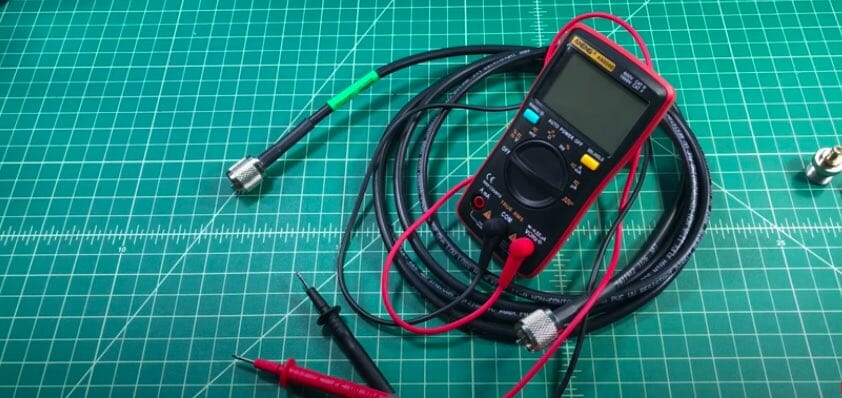
In this article, I’ll teach you how to identify a faulty coax cable in just a few minutes.
As a veteran handyman, I use several tricks to check the status of coaxial cables. I will teach you the best ones in this guide. Damaged coaxial cables come with many issues that include but are not limited to scrambled signals or poor internet reception. Finding the root cause is vital instead of just speculating to make decisions.
In general, you need to follow some simple steps to diagnose whether or not a coax cable is bad:
- Plug a DSS01 Coax Cable Tester into a coax outlet and press the button to test it
- Perform a continuity test with an electronic multimeter
- You can also check capacitance, resistance, and impedance with an electronic multimeter
I will cover more details below.
How to Diagnose a Faulty Coaxial Cable
Establishing the status of your coaxial cable is vital. It helps you to identify the actual problem instead of speculating. You can use several techniques to verify if your coax cable is bad or good. I will discuss a few of those techniques in detail.
Method 1: Using a Multimeter
You can use a multimeter to check if your coax cable is bad.
A multimeter checks the abilities of various pieces of an electronic device through a ton of complex calculations.
Perform the following tests on your coax cable:
Continuity Test
The steps below will guide you:
Step 1: Set the Multimeter
Plug the red probe lead in the socket with a V next to it and the black probe lead in the COM socket.
Then, tune your multimeter to the Ohms setting by rotating the selector dial. Finally, ping the probe leads; if the multimeter beeps, there is continuity between the probes. Now proceed to test the coaxial cable.
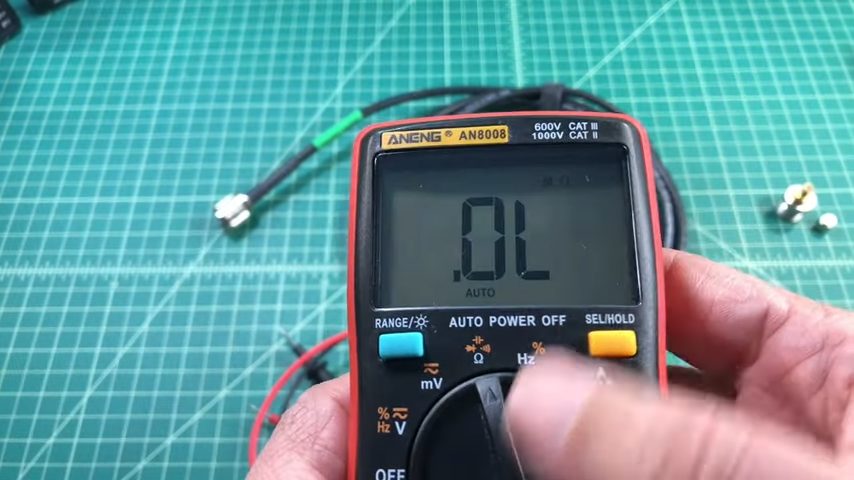
Step 2: Test the Connectors
A coaxial cable doesn’t have polarity.
Touch the probe leads on the two connectors of the coax cable. Your coaxial cable has continuity if the multimeter beeps and reads less than 1 ohm. If the reading exceeds one ohm, your connectors are faulty.
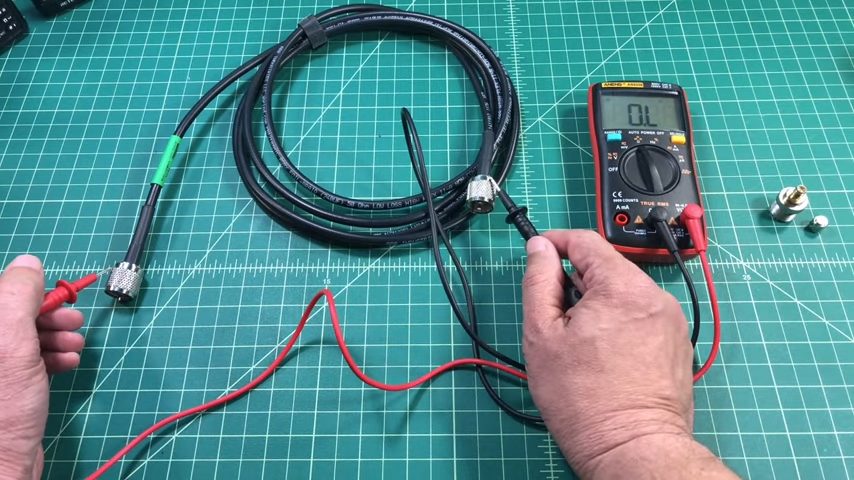
Step 3: Test the Wires Inside the Connectors
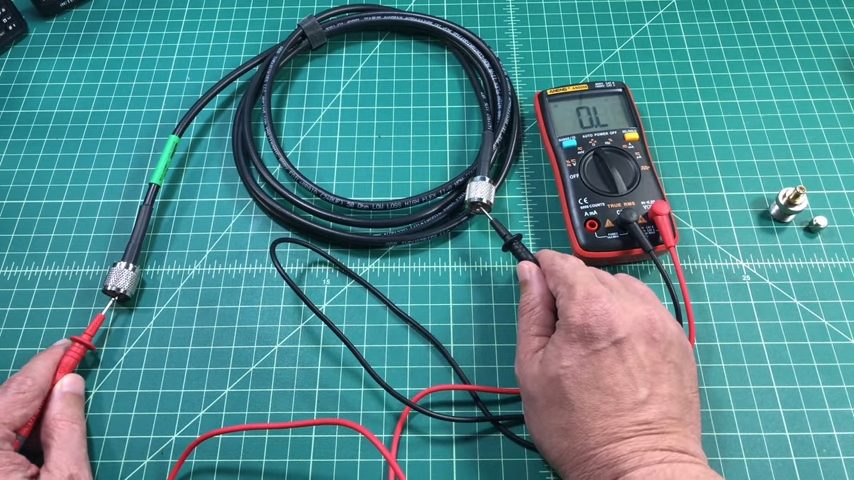
Again, touch the leads on the inside surface of the two connectors. Any reading below one ohm means your coax cable is functional.
Resistance Check
Here, the electronic multimeter will conduct a voltage test of the coaxial cable’s shield and other cable components. The display unit will show answers/readings in HMS (hectometers).
Step 1. Set the multimeter to resistance mode
Step 2. Insert a dummy load, 50 ohms resistance, in one connector. Then, touch one probe lead on the surface of the other connector and the other probe lead inside the same connector – without the dummy load.
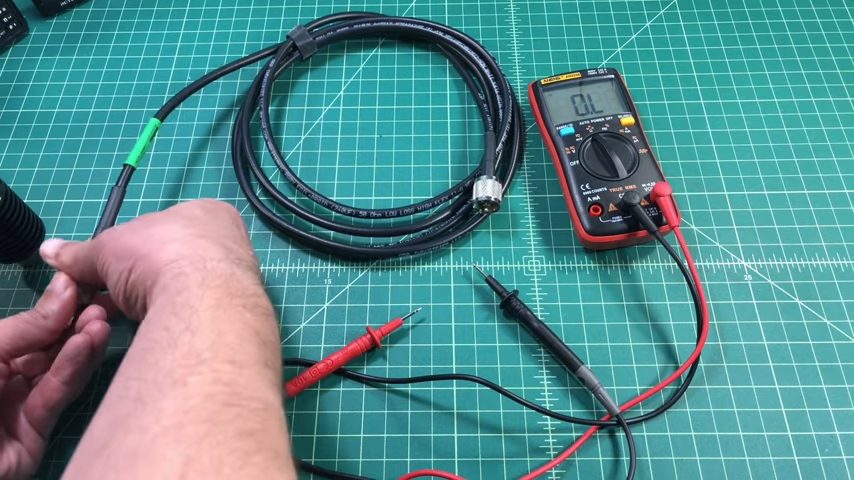
Step 3. Compare the resistance results you get with the resistance rating of your coaxial cable.
Capacitance Check
Again, use an electronic multimeter to check the capacitance of the coaxial cable shell and conductor. The calculations will be in picofarads (pf).
Procedure: With your multimeter in resistance mode, touch the leads on both ends of the coax cable and note the readings that will be very small – in picometers.
Inductance Test
You can use your electronic multimeter to check the inductance of your coaxial cable’s shield and line. An inductance check discusses nanohenry (NH) and Ohms (Ohm) solutions.
Signs of a Damaged Coaxial Cable
Rustic Connectors – If the ends of your coaxial cable develop rust, then the coax cable is likely to be faulty.
Missing components are an indication of faultiness in the coax cable.
The green coloration on the coaxial cable connectors also shows damage.
Weak Connectors – If you twist the connectors on the coax cable and feel loose, they are damaged.
Exposed Wires – If the wires inside the coax cable are visible, it’s damaged.
Damaged Plastic Tubing (Also Called Rubber Shield) – If the rubber shield is ruined, your coax cable may be faulty.
So, if you notice any of these signs, use an electronic multimeter to confirm.
Note: The earliest detection method to check the coax cable is knowing if they were already faulty.
A variety of companies manufacture coaxial cables, so their qualities vary greatly.
Method 2: Using a DSS01 Coax Cable Tester
I recommend using a DSS01 Coax Cable Tester to check issues in your coax cable. With this equipment, you avoid the acquisition or use of the following:
- Signal reception troubleshooting
- Signal transmission troubleshooting
- A multimeter is not required
- Tracing coaxial cable
- Continuity test – on the coax cable.
- All you need is a DSS01 Coax Cable Tester!
How to Use a DSS01 Coax Cable Tester
Follow these easy steps to test your coax cable with a DSS01 Tester:
Step 1. Plug a DSS01 Coaxial Cable Tester into a coax outlet.
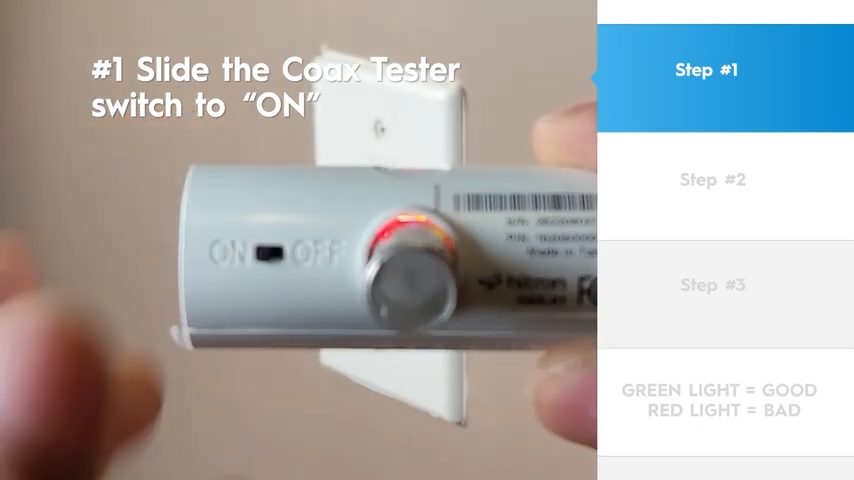
Step 2. Push the Test button. Results will pop up after a few seconds.
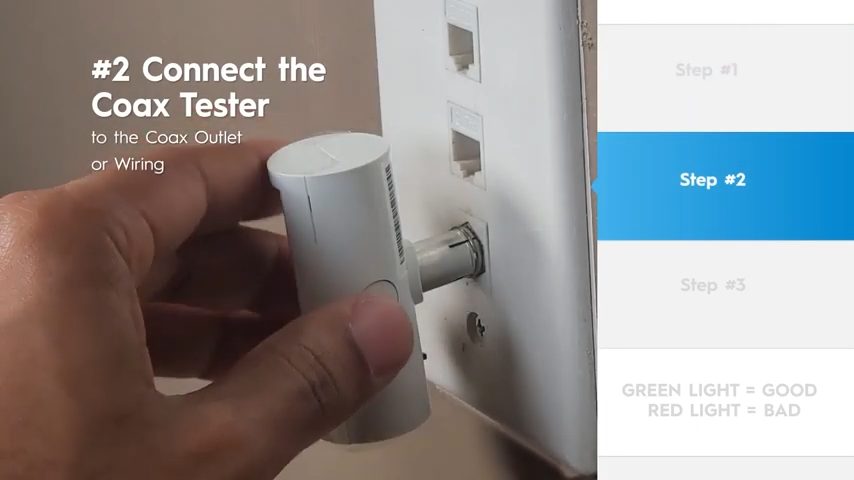
A DSS01 Coaxial Cable Tester saves time and money. All you need to know is how to plug in the coax outlet, and the Test button – is easy to use.
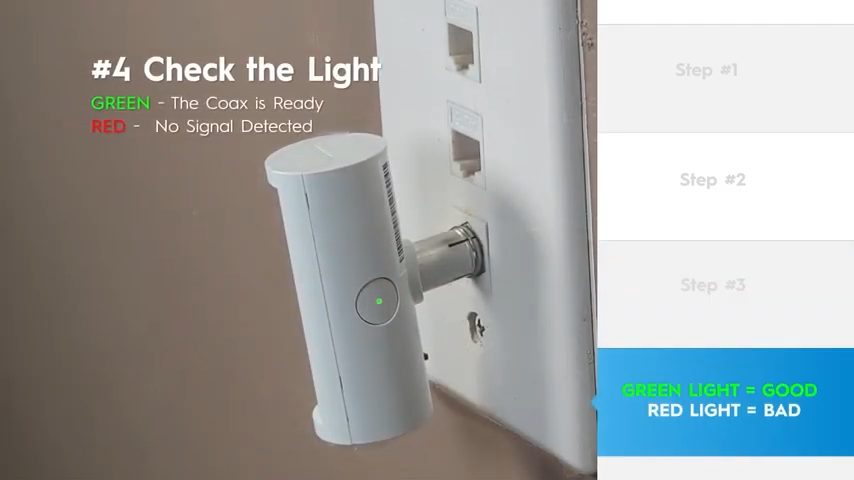
Common Issues that Affect Coaxial Cables
I have sampled four significant causes of faulty coax cables. Avoid them to guarantee your coax cables’ long operational life and general safety.
Heat Damage
The melting point of coax cables is 150 °F. That is a relatively low melting point. So, coaxial cables are vulnerable to high temperatures.
Hints: To avoid heat damage to a coax cable, keep them away from heat sources. If you don’t, the rubber shield can melt, shifting the components (in the cable) out of place.
Water Damage
Most electrical devices are vulnerable to water. Coaxial cables are no exception. The electrical wiring and elements can be dysfunctional if they come into contact with water. So, keep your coaxial cable away from water.
Physical Distortion
The coax cable’s shield is fragile. The tender sheath of the cable can break or hurled, handled roughly, or folded recklessly. Always orient the cables in straight positions. The slightest bend or fold can disengage the coaxial cable’s entrails (or inner components).
Connector Damage
A damaged connector can cause your coaxial cable to go bad.
The cables are fitted with connectors on both ends—the connectors relay information from one source to another. Therefore, altering either of the two connectors impairs the functions of the coax cable. Luckily, replacing the connectors is possible if diagnosed with issues instead of getting a new cable. And, of course, this is the main cause of faulty coaxial cables.
References
Website Resources:
- melting point. https://chemed.chem.purdue.edu/genchem/topicreview/bp/ch14/melting.php
- coaxial cable. https://www.sciencedirect.com/topics/engineering/coaxial-cable
Video References:
TheSmokinApe
Hitron Technologies

Looks great for a short piece of cable but what about a 150 ft cable that the multi-meter that does not have a 150′ probes no help.